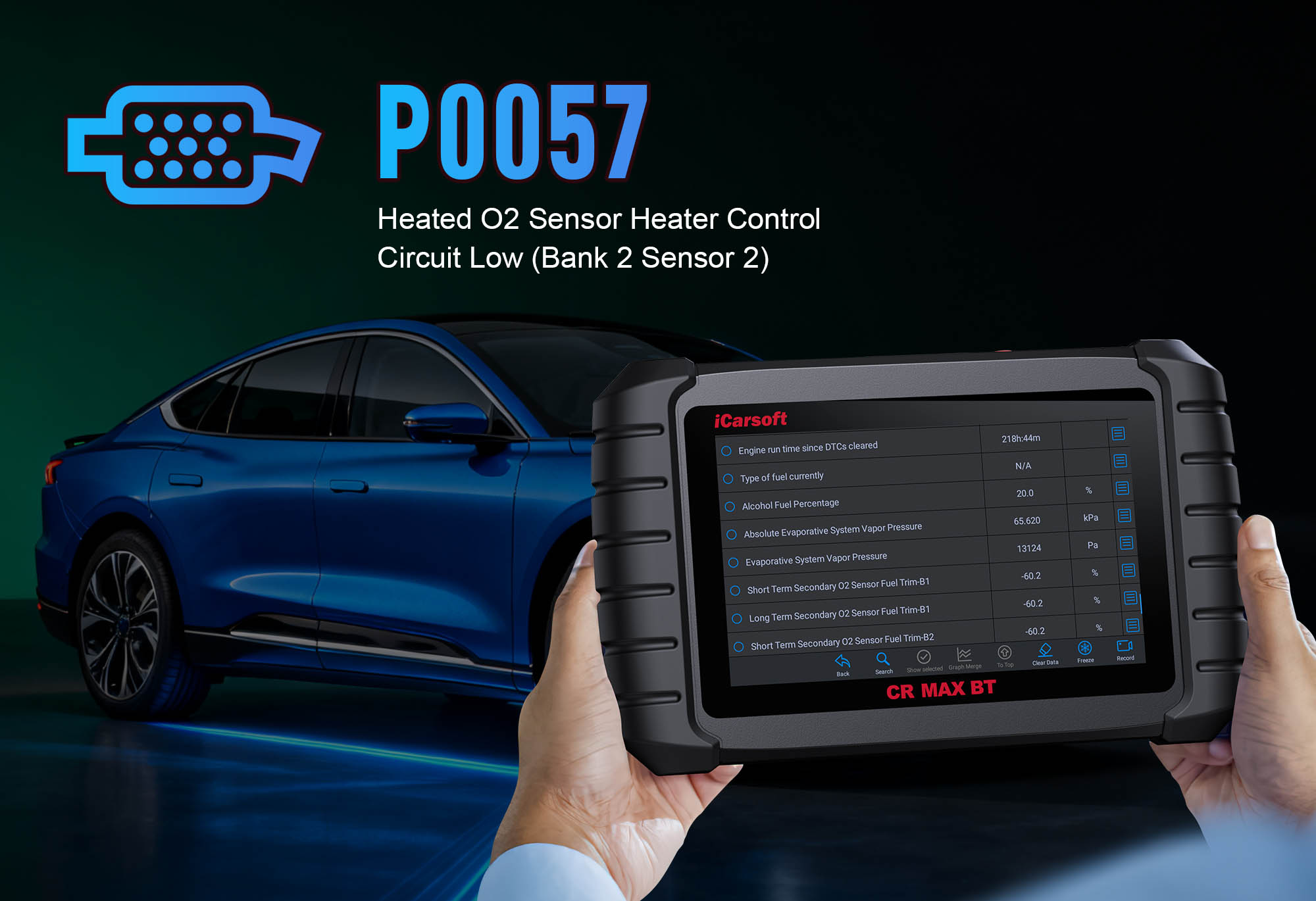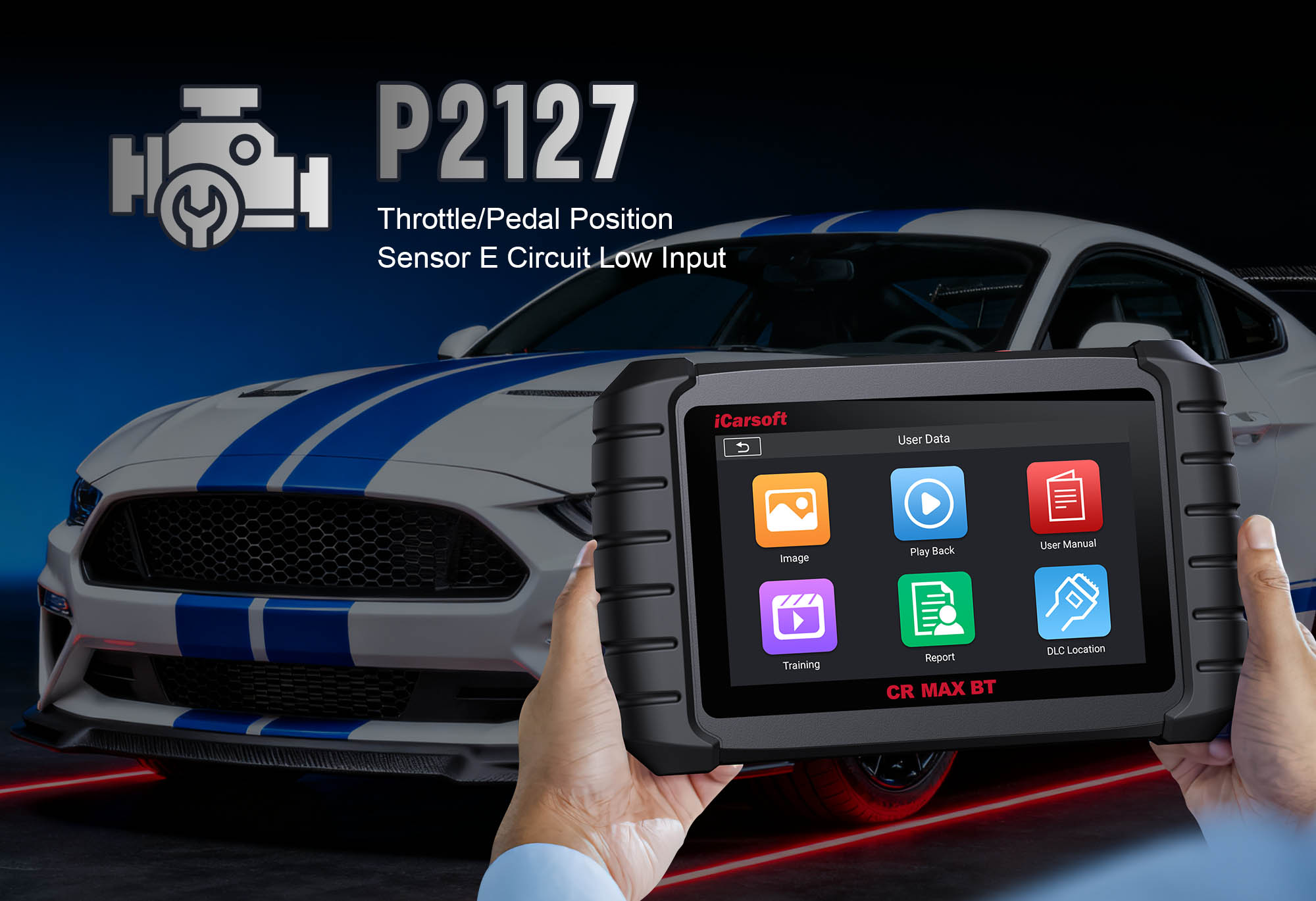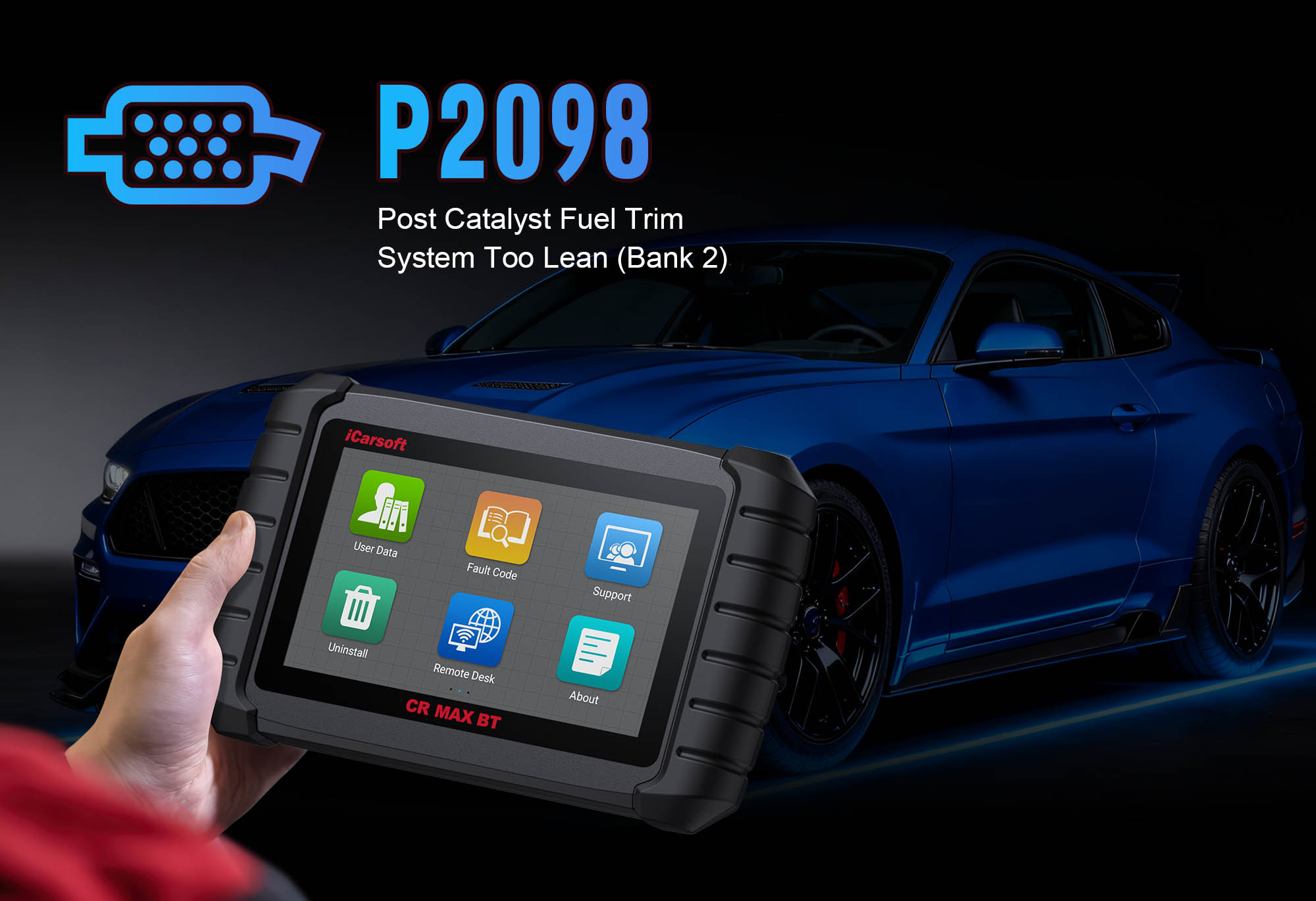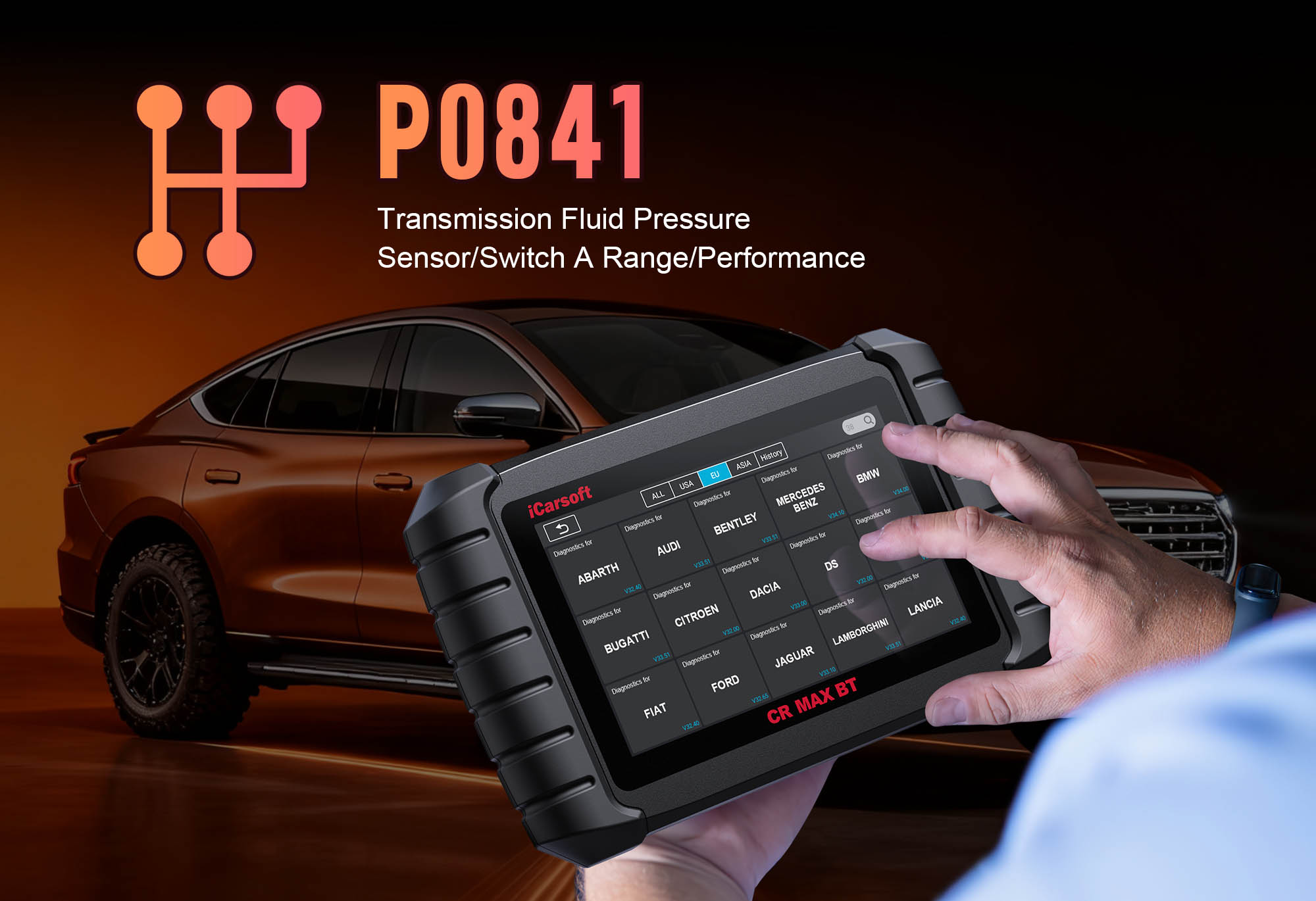Diagnose & Clear P0057 with iCarsoft CR MAX BT: Fix O2 Sensor Heater Control Circuit Low Voltage (Bank 2, Sensor 2)
Diagnose & Clear P0057 with iCarsoft CR MAX BT
If your vehicle’s check engine light stays on, you notice reduced fuel efficiency, or it fails an emissions test, a diagnostic scan will likely return P0057. This OBD-II code stands for "Oxygen (O2) Sensor Heater Control Circuit Low Voltage – Bank 2, Sensor 2"—a fault targeting the downstream O2 sensor. The downstream sensor is mounted in the exhaust pipe after the catalytic converter on cylinder bank 2.
The sensor’s heater is critical for maintaining its operating temperature (600–800°F/315–427°C). Without it, the sensor can’t accurately monitor the catalytic converter’s efficiency, leading to poor emissions control, wasted fuel, and potential catalyst damage. Basic scanners only flag a "heater circuit issue" but can’t isolate faults. The iCarsoft CR MAX BT, with specialized O2 sensor diagnostics, solves this. Let’s break down how to resolve P0057 step by step.
Understanding P0057: Symptoms & Causes
The Bank 2, Sensor 2 O2 sensor works with the upstream sensor to measure exhaust gas composition before and after the catalytic converter. Its heater uses 12V battery power to stay at operating temperature, even during low exhaust temps (e.g., idle). P0057 triggers when the ECM detects heater circuit voltage below the manufacturer’s threshold (usually <0.5V when activated).
Key Symptoms of P0057
-
Illuminated Check Engine Light (CEL): A steady CEL turns on, and some vehicles display "Catalyst Efficiency" or "Emissions System" warnings.
-
Reduced Fuel Economy: Inaccurate sensor data forces the ECM to use a rich fuel mixture, dropping mileage by 10–15%.
-
Failed Emissions Tests: The downstream sensor is critical for emissions monitoring—an unheated sensor causes high HC/CO levels, leading to failure.
-
Catalytic Converter Overheating: Prolonged rich mixtures (from sensor errors) overheat the catalyst, risking costly damage or premature failure.
-
Intermittent Performance Issues: Some vehicles hesitate during acceleration as the ECM struggles with bad sensor data.
Common Causes of P0057
|
Cause
|
Description
|
|
Faulty O2 Sensor Heater
|
The heater element in Bank 2, Sensor 2 burns out (common in sensors over 80,000 miles), preventing power draw.
|
|
Damaged Heater Circuit Wiring
|
Frayed wires, rodent chew marks, or corrosion in power/ground lines create high resistance, dropping voltage.
|
|
Loose/Corroded Connector
|
The sensor’s 4–5 pin connector (near post-catalyst exhaust pipe) becomes loose or rusted, breaking the electrical connection.
|
|
Blown O2 Sensor Heater Fuse
|
A dedicated "O2 Heater" or "Sensor 2 Heater" fuse in the under-hood box blows, cutting power to the circuit.
|
|
Low Battery Voltage
|
A weak battery (<12V) can’t supply enough power to the heater, triggering P0057 temporarily.
|
|
ECM Heater Driver Failure
|
The ECM’s internal heater control component malfunctions—rare, but possible in older vehicles.
|
Why iCarsoft CR MAX BT Excels at Diagnosing P0057
The CR MAX BT outperforms basic tools with features tailored to downstream O2 sensor heater circuit diagnostics. Here’s its key value:
Wireless Bluetooth Connectivity
Test hard-to-reach Bank 2, Sensor 2 (near rear exhaust) from up to 30 feet away—no tangled cords hinder access.
Live Heater Circuit Voltage Tracking
Monitors real-time voltage in Bank 2, Sensor 2 (11–12V when active), highlighting low-voltage issues instantly.
Bi-Directional Heater Activation
Sends direct on/off commands to the sensor heater, verifying if the ECM or sensor is faulty—avoids unnecessary part replacement.
AutoVIN Identify
Automatically detects vehicle make/model and O2 sensor type, pulling up specs (voltage ranges, pinouts) in seconds.
O2 Sensor Service Function
Supports sensor replacement and catalytic converter learning (35 makes), critical for post-repair calibration.
Step-by-Step: Diagnose & Clear P0057 with iCarsoft CR MAX BT
-
Initial Visual Inspection (Save Time First)
1. Locate the sensor: Use CR MAX BT’s Component Location > Engine > Exhaust > O2 Sensors > Bank 2, Sensor 2 (Bank 2 = farthest from vehicle front; Sensor 2 = after catalyst).
2. Check the connector: Inspect for corrosion/bent pins—clean with electrical contact cleaner, apply dielectric grease.
3. Inspect wiring: Follow harness to ECM, check for frays/heat damage—repair with heat-shrink, replace if severe.
4. Check the heater fuse: Use Fuse Guide to locate and test "O2 Heater" fuse—replace if blown.
-
Connect the Tool & Confirm P0057
Plug CR MAX BT into OBD-II port, power on, select AutoVIN Identify to retrieve specs. Navigate to Engine > Fault Codes > Read Codes to confirm P0057. Tap Code Details for vehicle-specific insights, and check related codes (e.g., P0063, P0141).
-
Monitor Live Heater Circuit Data
Start the engine, idle 5 minutes (lets ECM activate heater). Navigate to Engine > Live Data > O2 Sensors > Bank 2, Sensor 2 > Heater Voltage. Normal: 11–12V (on) / 0V (off). Red flags: <0.5V (no power) or fluctuating (loose connector). Check Battery Voltage—charge if <12V.
-
Test Heater Circuit Integrity
Turn off engine, disconnect sensor connector (wear gloves—exhaust hot):
1. Power wire test: Set multimeter to "DC Voltage"—touch heater power pin + ground. Ignition "ON" = 11–12V (0V = blown fuse/broken wire).
2. Ground wire test: Set to "Ohms"—touch heater ground pin + chassis ground. Normal = <1 ohm (>5 ohms = poor ground).
3. Continuity test: Check continuity between sensor power pin and ECM (use wiring diagram)—no continuity = broken wire.
-
Test the O2 Sensor Heater Element
1. Resistance test: Disconnected connector, set multimeter to "Ohms"—touch heater pins. Good = 10–40 ohms; infinite resistance = faulty sensor.
2. Bi-directional test: Reconnect sensor, navigate to Special Functions > Engine > O2 Sensor Heater Control > Bank 2, Sensor 2, command "ON". Listen for "hiss" (warming) and check voltage (12V)—no response = faulty sensor.
-
Repair & Clear P0057
- Blown fuse: Replace with OEM-compatible fuse (same amperage).
- Wiring/connector: Repair frays, clean with dielectric grease.
- Weak battery: Charge or replace if <12V post-charging.
- Faulty sensor: Replace with OEM-equivalent (use Part Lookup)—torque to 18–22 ft-lbs.
- ECM failure: Consult dealer for reprogramming/replacement (last resort).
Clear code: Go to Engine > Fault Codes > Clear Codes to delete P0057.
-
Validate Repair & Calibrate
1. Monitor data: Confirm heater voltage cycles correctly, sensor temp reaches 600–800°F in 5 minutes.
2. Catalyst learning: Use Special Functions > Engine > O2S to initialize catalyst learning (35 makes).
3. Test drive: Operate 20–30 minutes (idle/acceleration/highway)—ensure CEL stays off.
4. I/M Readiness Test: Run via OBDII Functions for emissions compliance.
5. Save report: Use History & Report to store diagnostic data.
Preventing P0057 Recurrence
-
Regular Sensor Checks: Use Service Reminder to test Bank 2, Sensor 2 every 30,000 miles.
-
Wiring Protection: Inspect harness every 15,000 miles—use heat-resistant loom near exhaust.
-
Battery Maintenance: Test voltage every 6 months with CR MAX BT—replace weak batteries promptly.
-
Lifetime Free Updates: Use One-Key Upgrade (Wi-Fi) to add new O2 sensor diagnostic features.
Conclusion
P0057’s low-voltage heater fault disrupts emissions control and risks catalyst damage, but the iCarsoft CR MAX BT simplifies diagnosis with wireless convenience, live tracking, and bi-directional tests. Whether you’re a DIYer or pro, this tool ensures you fix the root cause—avoiding trial-and-error and failed emissions tests.
With global vehicle coverage and 40+ service functions, the CR MAX BT is a long-term investment. Restore accurate catalyst monitoring, regain fuel economy, and drive with confidence—all with one professional-grade tool.





